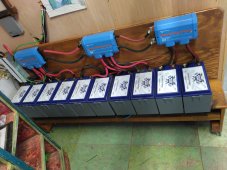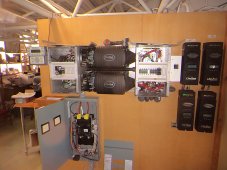johnskdyvn
New Member
- Joined
- Nov 8, 2021
- Messages
- 53
I've watched so many videos on how to setup a Growatt 3000 system, but the one thing i can never seem to find is what cable and fuse sizes i need to use? I bought a 3000w Growatt inverter, (4)SOK batteries (12v x 206ah), and I have 3600 watt solar panel array (12 x 300w panels). While connecting my batteries in series to make a 48v system, what size cables should connect the batteries together? 2/0 vs 2 vs 1? Also, where should i use a fuse (between the battery and the inverter)? What size fuse? What kind of fuse? Will Prowse uses the rack type battery system now in his videos so there is no need to add in a fuse in his videos. I already have my (4) batteries bought and paid for. I just can't seem to find the answers anywhere. I am NOT that electrically inclined. I want to make sure the whole system is set up correctly without burning down my off-grid cabin. Thanks so much for any and all opinions on this.
Johnny
Johnny





